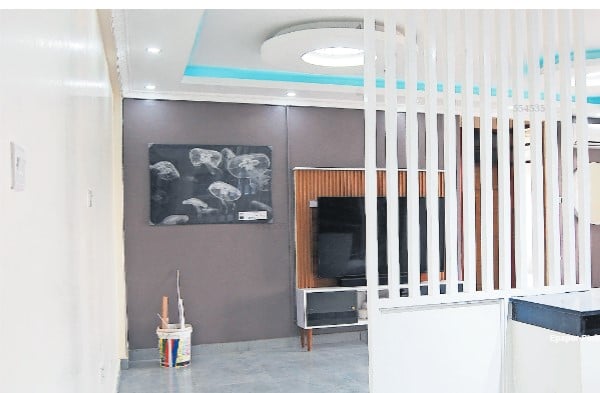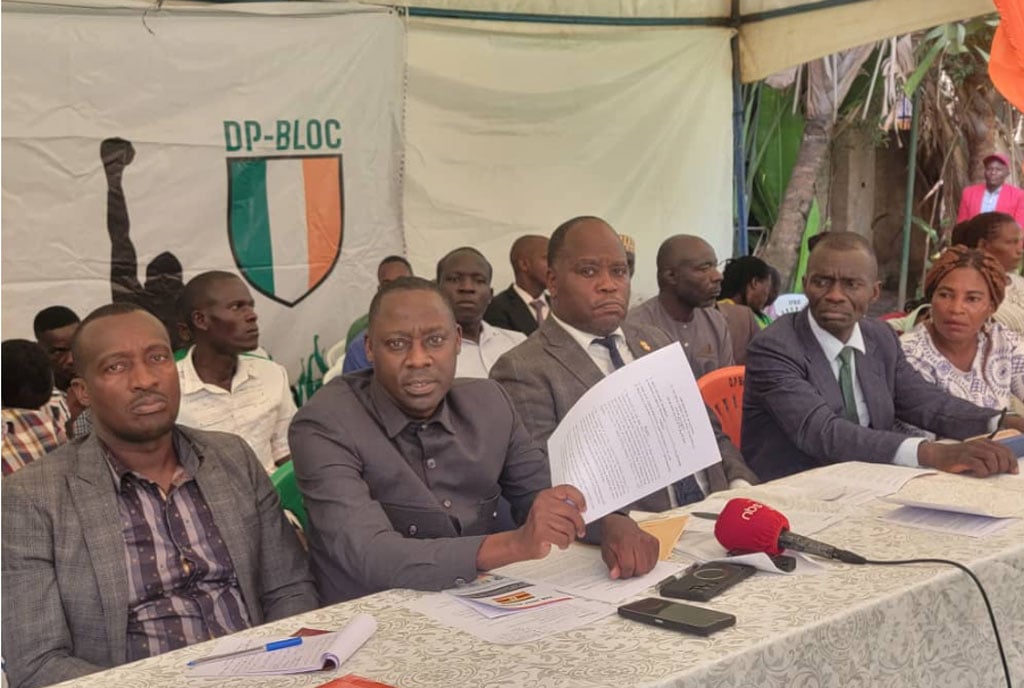Prime
The journey of Uganda’s concert band music

Melody Band which was the resident band at Kololo Club (now Ange Noir) in 1965. Courtesy Photo
Two contemporaries, Andrew Kyambadde and David Jingo, have more than a century of music experience between them. They were part of the local band Kampala City Six formed in 1958, although they were recording artistes even before then.
Even in the evening of their lives they have not lost their vocal chords as they punctuate the interview with tunes of the different top charts of their times.
When the Second World War ended in 1945, the returning servicemen, known as Abaseveni, not only came back with military experience and survival stories, but some had learnt a skill that changed the entertainment scene in the country.
According to Kyambadde, band music in Uganda owes its birth to two brothers; Serunkuma and John Bossa. They were returning ex-servicemen who upon their return in 1945 started a local band which they called Mengo Orchestra.
“The band which had its training base in Lungujja [in Rubaga Division] was financed by Jolly Joe Kiwanuka and Eridada Mulira. Other members included Yeko Mukasa, [former premier Abraham] Waligo, Luwemba, Lameka Kamanyi and his wife. The wife was the one training the band’s female dancers,” says Kyambadde.
He says the new band also caught the attention of Sir Edward Mutessa that he started riding to Lungujja to watch the rehearsals.
“Mutesa used to hide his horse and watch from the background, most of the band members were his friends he had studied with at [Kings College] Budo. And when he became king, the same band was used to entertain guests at a number of palace events. Even on his wedding, it’s the one that played,” says Kyambadde.
However, in less than 10 years, the band started falling apart and its members such as Israel Magembe (RIP) went to Congo to pursue his music career, from where he returned in 1958 to start a music revolution in Uganda, setting the trend of the Congolese music influence in Uganda.
Kampala City Six
“When Magembe returned, he started a band called Kampala City Six. At that time Jingo and I were students, but already engaged in music, not as performing artistes. At that time we were recording artistes,” Kyambadde recalls.
The duo’s music was recorded on LP discs and played on Radio Uganda which was the only broadcaster then. They sold their songs in the few music stores in Kampala such as Capital Music Stores.
When Magembe started his band in 1958, this set the trend for other bands to come up. A number of those who followed in his footsteps were not started by musicians, but people with money to invest in musical instruments and hired the musicians.
“People like Seburumbi and Bukenya founded their own bands because they had money, Musicians were broke to have their own bands. Since our music was already playing on the airwaves, Magembe lured us to his band which made us leave Mengo Coaching School, an Indian owned school, to concentrate on music alone,” says Kyambadde.
As more bands opened up, a factory specialising in the making and recording of LP discs opened shop in Kampala. It was called Tom-Tom.
“The factory located in Industrial Area was co-owned by a Briton and Indians. They used Elly Wamala (RIP) to listen through the songs and decide whether they were good enough to be recorded from their studios. I knew Wamala during our school days; he was staying in Bulenga while I was staying in Busega. We used to walk together to school,” Kyambadde reminiscences.
“Wamala was the first to be recorded by the Tom-Tom studios who started with Kiki Mukyala Okunumya Otyo. By that time Magembe had released his hit single Abantu bomukambala bakyakala bulala bakela kumakya kumilimu gyabwe, this raised the interest in us.”
By 1959, Magembe’s band had established its home at Kyegundda in Nakulabye which later went on to become Suzana Night Club. “It was while there that he sent his friend Kawalya to convince us to join his band,” says Kyambadde.
Magembe offered the two friends a monthly salary because they were still young, the rest of the band members were given a weekly pay.
“He paid us Shs350 a month and that was a lot of money at that time,” says David Jingo. “The most expensive shirt at that time was costing Shs45, and it could be paid in instalments. Raleigh, the best and most expensive bicycle in Kampala, was Shs300, Philips and Gazelle were at Shs260.”
With big money coming their way, the two left school to concentrate on music and became regulars at Kampala City Six’s home at Palm Tree Bar in Bwaise (where Happy Hours Primary School was, close to the stream).
“Magembe brought in Masagazi, another top musician, making Palm Tree Bar the place to be every evening,” Jingo explains.
Indians who operated bars also started resident bands of their respective places. To have their resident bands, they poached from the already existing bands.
“I moved from Kampala City Six to Satellite Bar on Entebbe Road, it later became Florida Night Club. Kawalya and Kanyike followed suit… Masagazi was taken to start a new band called Uganda Keezala owned by an Indian called Asanani,” recounts Kyambadde.
Move to new bar
Kyambadde later moved to Kamulu’s New Life Bar in Mengo, now Sir Apollo Kaggwa Primary School. The same Indian also owned an Indian exclusive club called Kololo Club, now Ange Noir Discothèque.
“He came in the night at Satellite Bar, hid his car in a banana plantation and sent for me. Speaking in fluent Luganda, he asked me to join his band where he was going to pay me Shs400 a month and a free fully furnished house. That was more than what I was getting and I agreed to move,” says Kyambadde.
Type of music played
Rumba, chachacha, rock and roll, jive, foxtrot, slow and calypso were among the types of music that dominated the music industry then.
However, the two witnesses to the journey of Uganda’s music industry concur that with the influx of Congolese musicians, Congolese beats captured Uganda’s music scene.
“Music then had variety, but now ‘musicians’ use one or two beats and call it music,” says Jingo.
Before concert band
Jingo says before the advent of concert band music, the source of entertainment was the drums, ndigidi, and xylophones.
“The coming of the foreigners opened us up to new entertainment. Music by Jim Reeves, Elvis Presley, Cliff Richard, the Shadows, Beatles, Rolling Stones and others became popular. It’s from these different artists and groups that we learnt the different beats,” says Jingo.
When local musician Israel Magembe returned from Congo in the late 1950s, with him came a myriad of Congolese musicians and bands. Their music also started to be played on Radio Uganda later on. The change from traditional beats was mainly influenced by the Western and Congolese music.
“At Kampala City Six we played all types of music and this almost applied to all bands playing in different places. It was only Club Laquinta on top of Norman Cinema (now Watoto Church, Kampala Road), patronised by Europeans and Indians, that played only European music,” says Jingo.
According to Jingo, the high-end club next to Lanquinta was Suzana in Nakulabye, and Kololo Club, an Indian-only club owned by Kamulu.
Kyambade says soon after independence, Obote became a regular patron at Suzana Night Club and always had a corner reserved for him.
“One of our colleagues, Nsubuga Kaate, had a song yeyeka Obote wafe composed for him [Obote]. Whenever it was played, Obote ordered for crates of beer to be brought on the stage,” Kyambade says.
The duo narrates that in the early 60’s Congolese flocked to the Ugandan music scene with King Jazz Band opening the way as a visiting band, but later settled in White Nile as a resident band.
Kampala City Six was the first indigenous band. It was followed by Top Ten based in Ndeeba, then O.K Band of Sebirumbi and Bukenya’s Band in Ntinda. But along the way, they brought in Congolese into the local bands.
“King Jazz Band in White Nile became very popular and Radio Uganda gave Congolese music a lot of airtime. This forced other local bands to copy Congolese beats and the presence of Congolese joining other local bands to play music had a great impact on Ugandan music that the local music scene ended up with a lot of Congolese than local indigenous rhythms and tunes,” says Kyambade.
The freelance Congolese instrumentalists would listen to a person sing and along the way they would create a beat. “They would play a Franco style then bring in the Kabasele style and fuse the two types into one song until they got one beat for the song,” explains Jingo.




